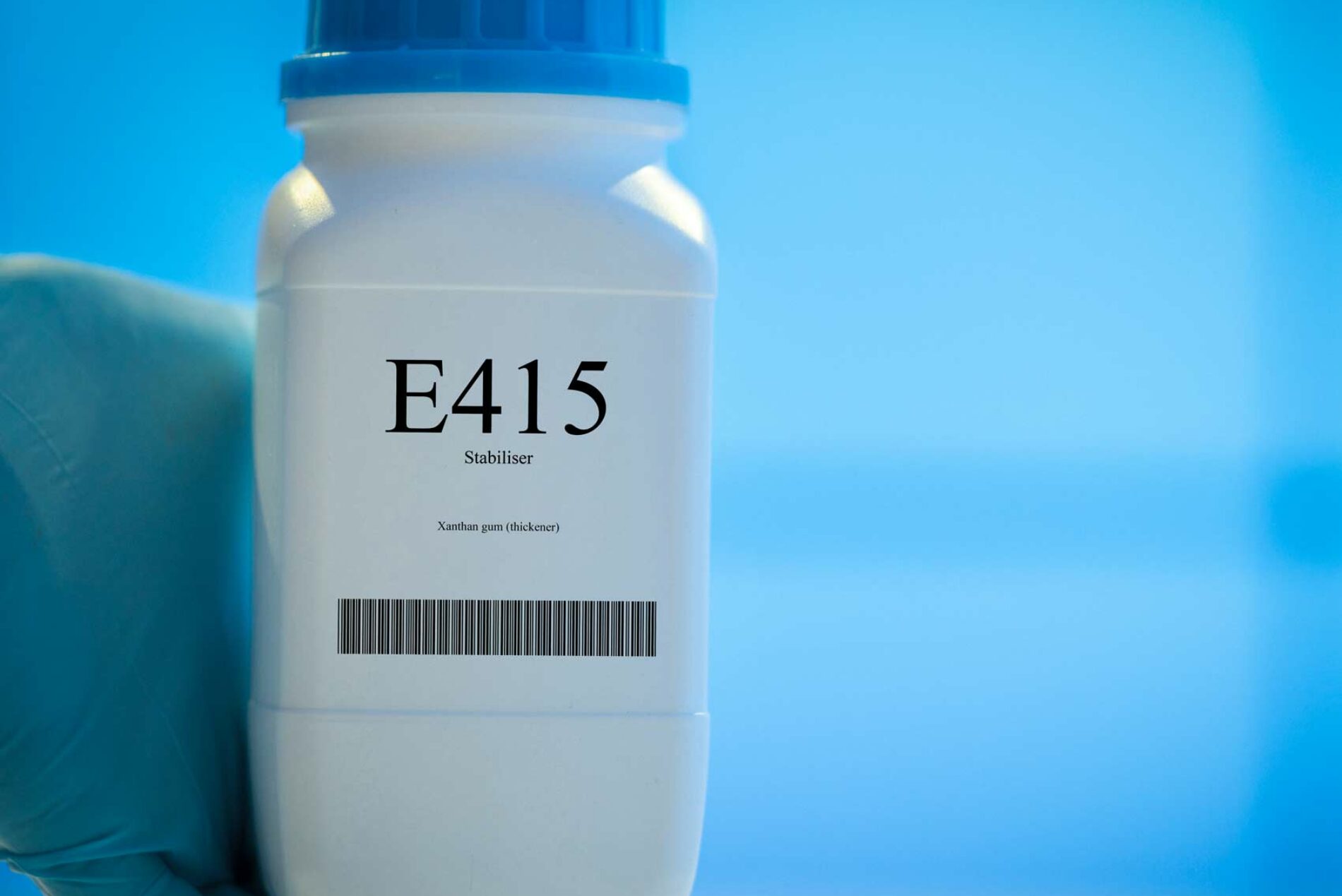At Lehmann Ingredients, we stock and sell Xanthan Gum Amylase Free in either 80 or 200 mesh (Day 1 for Day 4 delivery). Below, we explore what Xanthan Gum is, why it is used and how to avoid the most common challenges when testing.
What is Xantham Gum
Xanthan Gum is defined as a chain of sugar building blocks, made through a process of fermentation to convert simple sugars using a specific kind of bacteria. In fact, Xanthan Gum is a popular food additive widely used as an ingredient mainly in the food industry but could also be found in personal care products. Due to its functionality to act as a stabiliser or thickener, it is used mainly to improve the texture of food, but also has some positive health impacts.
Xantham Gum in Food Manufacturing
Food and drinks manufacturers use Xanthan Gum to stabilise products by preventing ingredients from separating. Some of its attributions include improved consistency, shelf life, flavour and appearance. It is also a popular method of thickening liquids since it does not change colour or flavour. Amongst the most common products made with Xanthan Gum are ice cream, bakery, salad dressing, sauces, soups and confectionery.
The ingredient also plays an important role in gluten-free food preparation – flour contains gluten and so gluten-free cooking relies on different substitutes such as xanthan gum as a thickening agent.
Some other attributes of Xanthan Gum include pH and heat/freeze/thaw stability.

Xantham Gum in Cosmetics manufacturing
Xanthan Gum can also be used in the manufacturing of many cosmetic and personal care products. It acts as a thickening agent to keep products such as toothpaste, lotions, creams and water gels uniformly thick.
Health benefits of Xantham Gum
Lower blood sugar – Xanthan Gum may lower blood sugar by slowing digestion and affecting how quickly sugar can enter the bloodstream.
Lower cholesterol – when consumed in high amounts, Xanthan Gum might lower cholesterol levels.
Easy to swallow – for people with swallowing issues, Xanthan Gum helps by thickening food and saliva which reduces the risk of choking.
Weight loss – consumption of Xanthan Gum may result in fullness by delaying stomach emptying and slowing digestion.
Using Xanthan Gum as an Ingredient
Xanthan Gum is available in different mesh sizing (particle size) which mainly have similar functions.
It is important to recognise the impact of dosage on a recipe:
- Too much Xanthan Gum will have an adverse thickening effect, making it difficult to process further (if required) and create an unappealing end product.
- Too little Xanthan Gum and it will not meet its stabilisation or thickening requirements
Amylase-Free vs Normal Xanthan Gum
It is important to recognise the two types of Xanthan Gum available to food manufacturers and to outline the difference which, in some cases, may be crucial. An amylase is an enzyme that catalyses the hydrolysis of starch into sugars and is present in people`s saliva as well as in food such as rice and potatoes. This means that any recipe’s starch will be broken down by conventional Xanthan Gum. In other words:
Amylase-Free = Suitable for use in recipe’s including Starch
Normal = Not suitable for use in recipe’s including Starch
How can we help?
Lehmann Ingredients have a 35 year history in the sourcing and supply of ingredients for customers both in and outside of the UK. We are trusted suppliers of high-quality Xantham Gum products to a number of high-profile organisations from startups, to more established companies leading in various retail categories such as sports nutrition and cereals.
Contact a member of our team by emailing enquiries@lehmanningredients.co.uk or calling +44 (0) 1524 581560.




